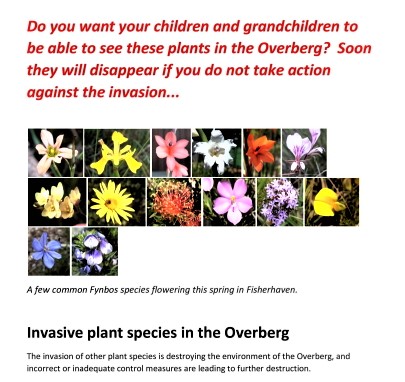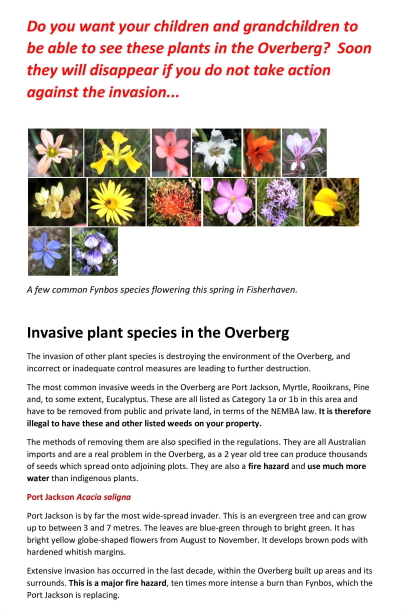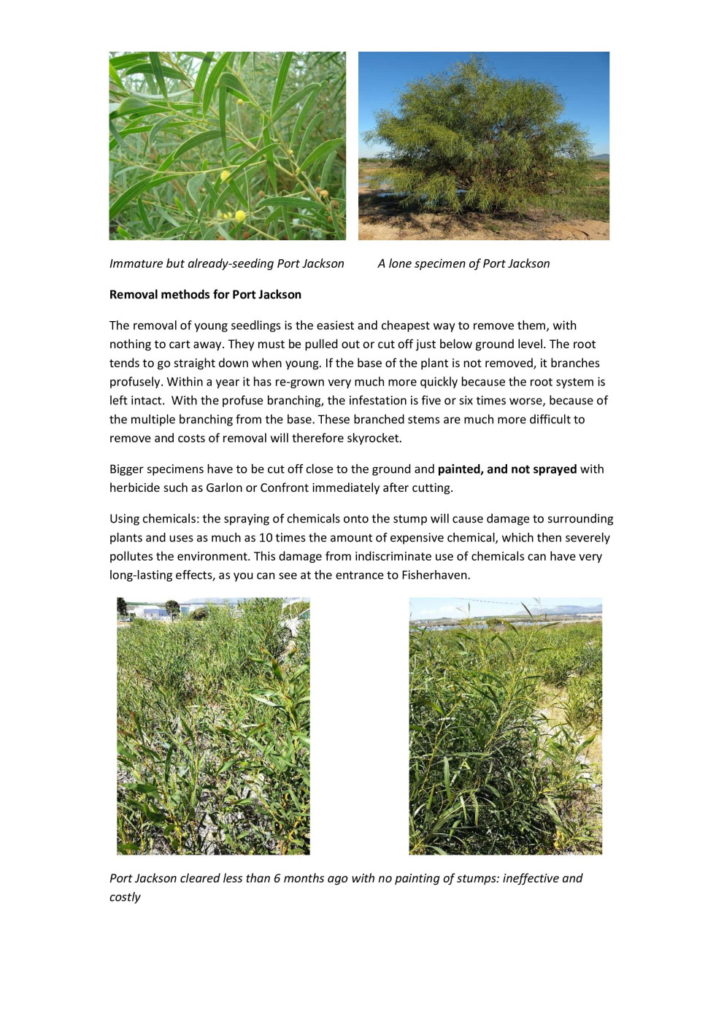
The main invasive plant species for Fisherhaven pamphlet was produced a few years ago (2017). It is still very valid and the information has not changed. In the intervening years the alien plant invasions have become worse with a greater fire hazard, more drying out of an already dry area and more damage to wetlands especially.
The pamphlet was widely distributed as a hard copy and bears repeating here on social media. The NEMA laws govern the legislation of alien species invasions in terms of their severity and clearing regulations.




The invasive plant species Fisherhaven pamphlet also applies to the greater area of the Bot River Estuary and Hermanus.
Invasive plants use a lot more water than indigenous species. (This is especially a problem in this dry area).They also tend to dominate the vegetation thus reducing biodiversity greatly, especially in wetland areas. Wetlands often have greater biodiversity than the tropical forests. They increase the fire risk greatly especially in the Fynbos areas, where periodic fires are necessary for the preservation and maintenance of the Fynbos. This is not only by increasing the fuel for a fire by as much as 3 times but also been much more flammable. Green Port Jackson burns easily because of the high oil content. Fires in a severely invaded area can be hotter by a factor of 4. The increased fire risk can then be 12 times as much (3 x 4). Fisherhaven is surrounded by severe invasive plant species. Never mind, the proliferation of Port Jackson within Fisherhaven itself, which has increased in recent years.
The Bot estuary areas, geology and invasive species proliferation has been documented in ‘The status of biological invasions of the Bot River Estuary‘. This provides a valuable baseline for control projects.

Recent Comments